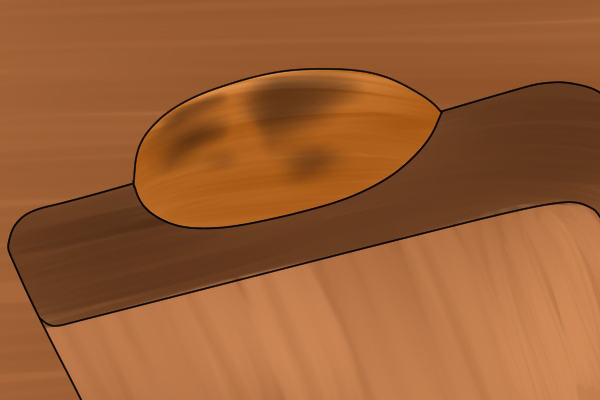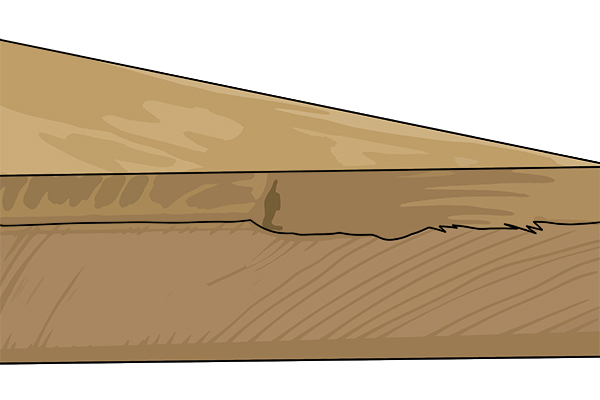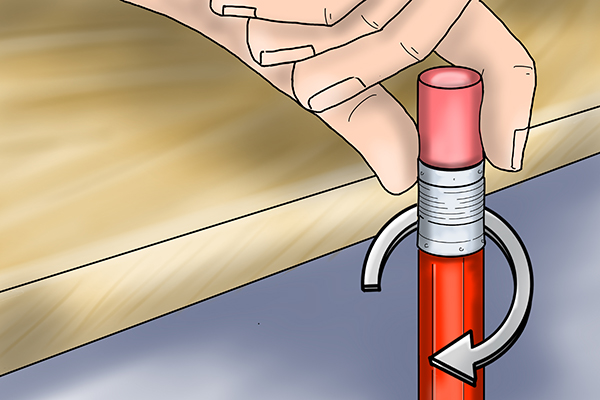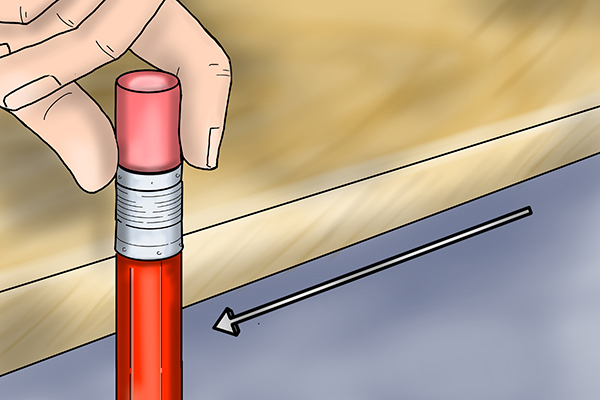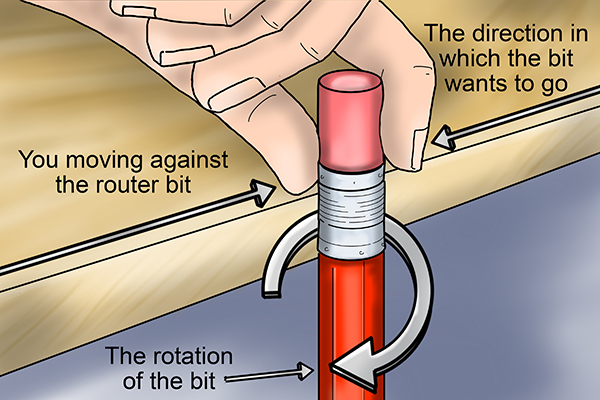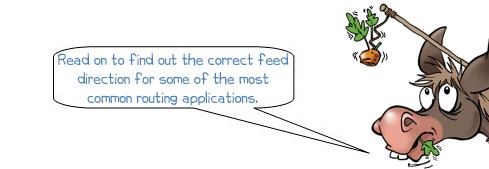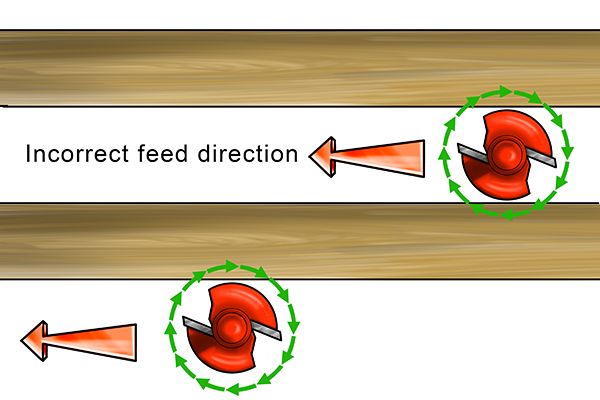Router feed rate and feed direction |
||||
 |
||||
|
When using a hand-held router, the feed rate refers to the speed at which you feed the bit into the material (move it along the workpiece). When using a router mounted in a router table, the feed rate refers to the speed at which you feed the material against the router cutter. |
||||
Router feed rate |
||||
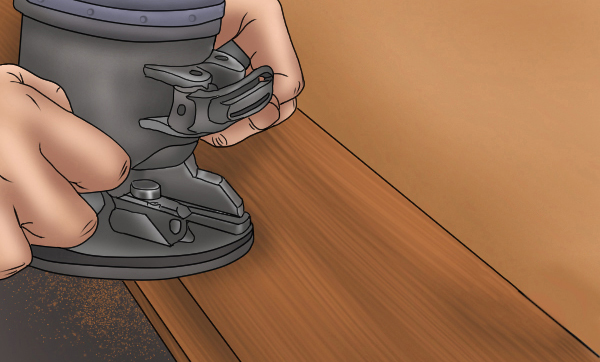 |
Determining the feed rate you'll need to use is more difficult than setting the speed on the router as it depends on the user's judgment and experience of working with a particular set up. The type of material, the size of cutter, and the depth of cut all change the feed rate you'll need to use. Here are a few general things to consider when trying to determine the correct feed rate. |
|||
 |
Router bit sizeTo avoid putting excess strain on the router, larger router cutters should be fed more slowly, and smaller cutters can usually be fed at a faster rate. But, very thin cutters, no matter how small they are, should also be fed slowly to avoid bending or breaking them, as they will not be as strong as the larger cutters. |
|||
 |
||||
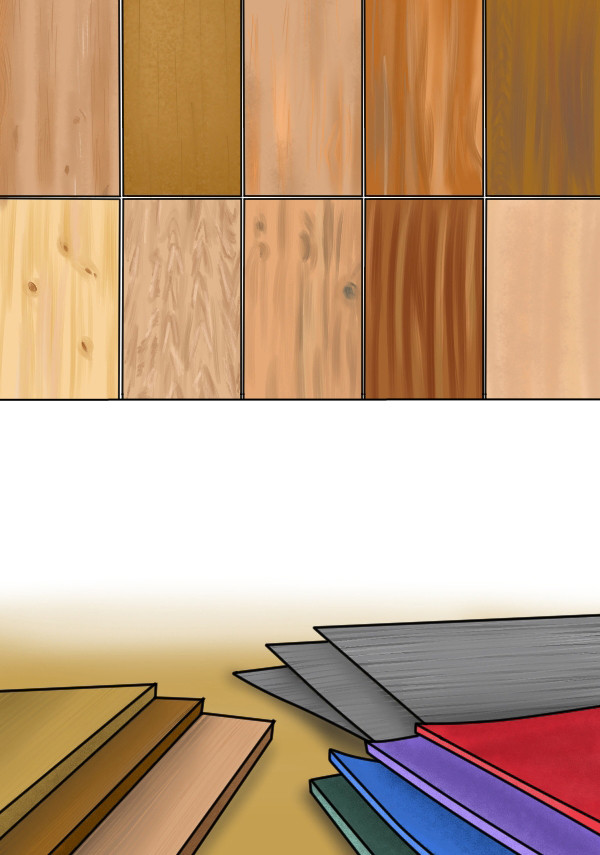 |
Type of materialSoftwood (pine, cedar, fir)Shallow cuts in softwoods can be made at a faster rate. This is because softwoods are easier to cut through and less abrasive on the cutter's cutting edges. Hardwood (oak, walnut, ash)All cuts in hardwoods should be made at a slower rate. MDF or plywoodRouting in MDF or plywood should be done at a slower rate, as these materials are particularly abrasive. PlasticPlastics require a higher feed rate. A lower feed rate will burn and melt the material. |
|||
 |
Depth of cutDeeper cuts (more than few millimetres) require a slower feed rate. If you want to make a deep cut, it is better to do so in a series of shallow passes that get progressively deeper. This will minimise the stress placed on the cutting edges of the router bit. Shallower cuts (a few millimetres) can be made at a faster rate as they are easier and less stressful for the router cutter. |
|||
 |
Routing techniqueYou must always try to rout in a continuously smooth and uninterrupted motion. Pausing, for even a moment, can cause the cutter to burn the surface. These marks can be hard to remove on some materials, such as light coloured plastics or woods. Find a comfortable stance before working to ensure that you’re not continually adjusting your position, and try to plan your cut beforehand, so any changes in direction are smooth and effortless. |
|||
 |
||||
How to ensure you feed at the correct rateA great way to judge you feeding rate is by listening to the router when it’s running at no-load (out of the material) and again when it is cutting. You should also look at the waste material that is being produced and the finished cut, these will indicate of the feed speed is not correct. |
||||
 |
Feeding too slowlyNot feeding fast enough means the router’s motor is running too freely. This is often accompanied by a high-pitched noise.
Feed too slowly and the cutting edges will come into contact with the material too many times. The material they remove will come out in the form of a fine sawdust.
Feed too slowly and the router bit spends too long on one particular part of the material.
This causes friction and build up of heat between the bit and the material, burning or scorching the surface, and leaving an unattractive mark. |
|||
 |
Feeding too quicklyIf you feed too quickly, you put excess strain on the motor, causing it to slow down, and make a louder, lower-pitched noise as it struggles to keep up.
If you feed too quickly, the bit will not have time to cut properly and will compensate by gouging large chunks out of the edge of your material. These will appear as large and uneven chunks or chips.
The bit will gouge large chunks out of the edge of the material, often splintering it. This will leave an untidy finish, with ragged and uneven edges. |
|||
 |
Just rightWhen feeding at the correct rate, the router should sound only slightly different from when it’s running out of the material. It should sound as though it’s bearing a load, but still running smoothly.
Feeding at the correct rate will produce thin, light shavings that are roughly equal size.
Feeding at the correct rate will produce a smooth, even surface with no gouges or burn marks. |
|||
What is the feed direction of a router? |
||||
Hand-held routing |
||||
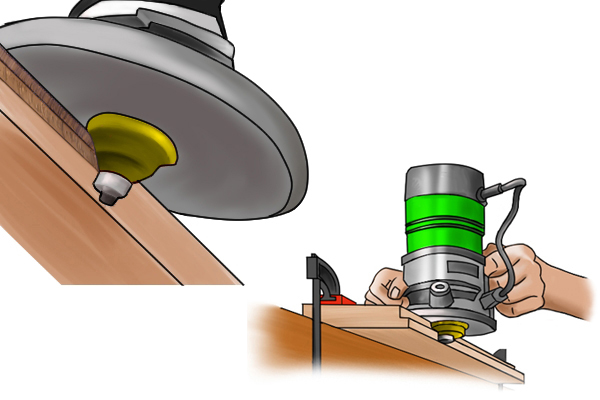 |
For hand-held routing applications, the feed direction refers to the direction in which the router bit is fed into the material.
In a hand-held router, the router bit spins in a clockwise direction, so the feed direction will usually be from left to right. |
|||
Router table routing |
||||
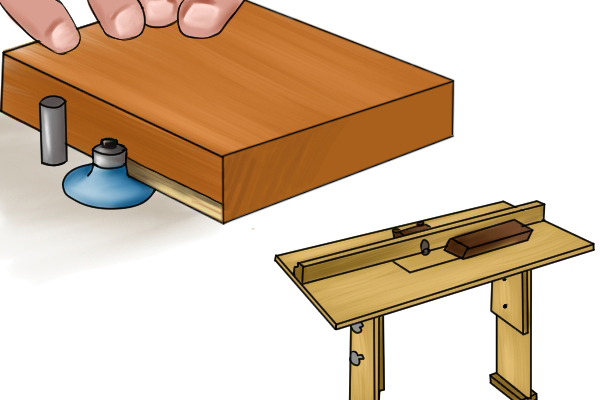 |
Using a router in a table or mounted in a bench top, the feed direction refers to the direction in which you feed the material against the router bit.
Stationary routing involves the bit being positioned upside down in the table, with the cutting edges facing upwards. As a result, the cutter spins in an anti-clockwise direction and so the feed direction will usually be from right to left. |
|||
What happens if you feed in the wrong direction? |
||||
Using a hand-held router |
||||
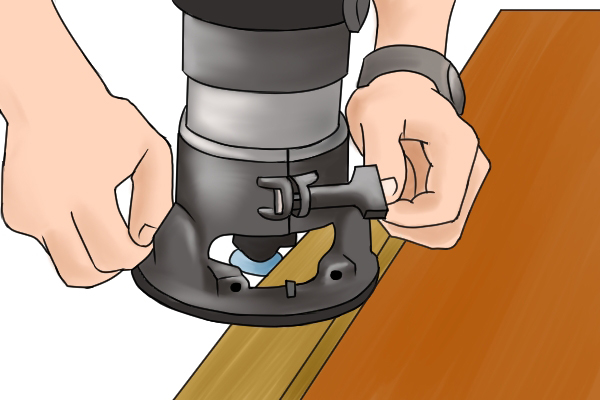 |
Feeding in the wrong direction when using a hand-held router will cause the bit to push itself (and the router) away from the edge it is supposed to be cutting.
This will make the router difficult to control and will usually leave an uneven and messy-looking edge. |
|||
Using a stationary router |
||||
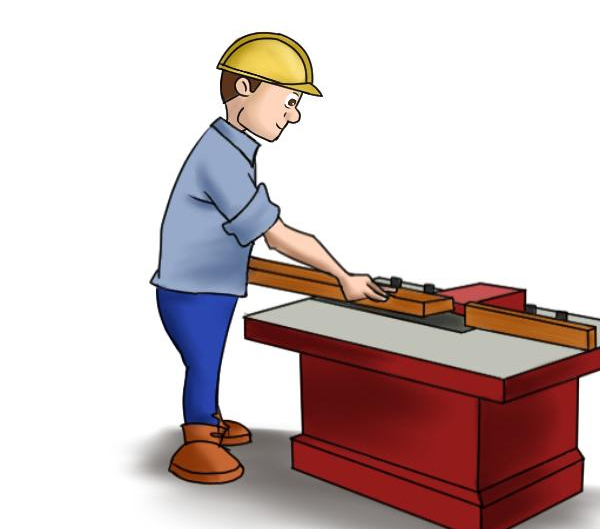 |
Feeding in the wrong direction is especially dangerous when using a stationary router such as a router mounted in a table.
Feeding with the rotation of the bit will cause it to pull the material out of the user’s hands. This is because the cutting edges do not have the chance to bite into the material and cut properly, they simply drag the material across the surface of the table/bench top.
If your grip on the material is tight, your hands will also be pulled towards the cutting edges of the router bit! |
|||
 |
||||
What is the correct feed direction for hand-held routing? |
||||
Routing along an edge |
||||
|
|
When routing along an outside edge using a hand-held router, you should always work from the left to the right, against the rotation of the router bit. Feeding in the right direction allows the router bit to pull itself (and the router) up against the edge of the material, creating a smoother cut. Routing from right to left on an outside edge may be OK if you’re an experienced user and only making very shallow cuts, but most of the time it will cause problems. |
|||
Routing inside edges |
||||
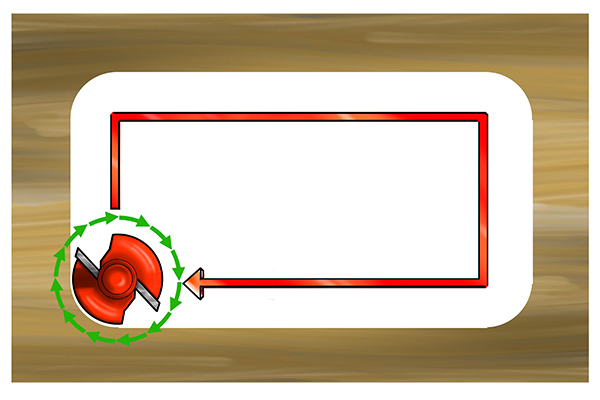 |
This may look complicated, but don’t panic, just remember the pencil analogy - if you rotated the bit clockwise, which way would it want to move across the material? Then rout in the opposite direction.
When routing along the inside edges of a piece of material, you should work in a clockwise direction. |
|||
Routing outside edges |
||||
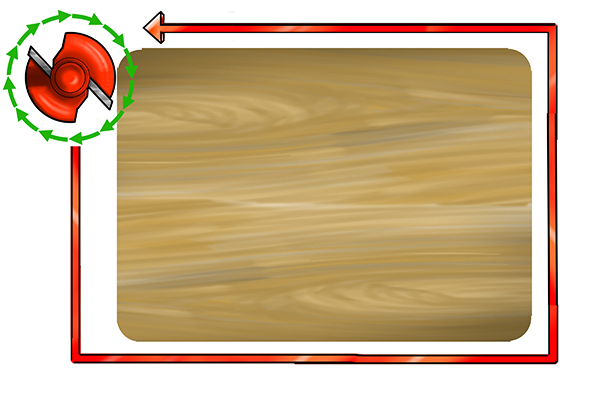 |
When routing all the way around the outside of a material, move the router in an anti-clockwise direction. |
|||
Routing a circle or arc |
||||
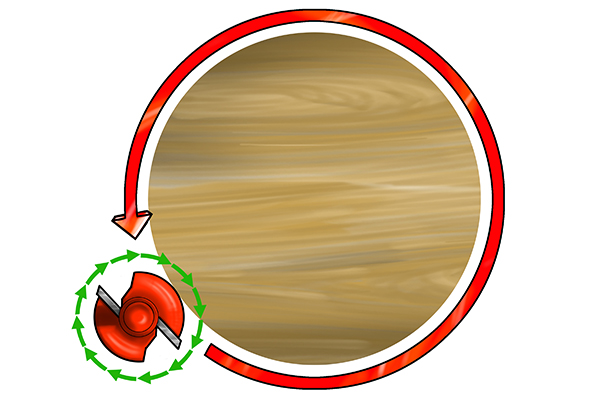 |
When routing an arc or circle with a hand-held router, you should always move in an anti-clockwise direction.
This is usually done with the aid of a beam trammel, which is a type of routing aid known as a jig, that works in the same way as a compass, helping to rout curves or circles. |
|||
Routing a groove through material |
||||
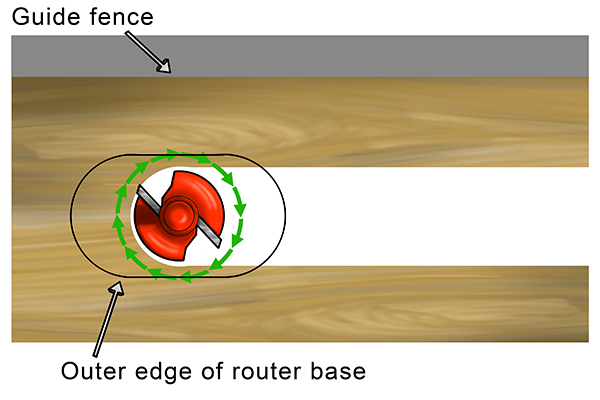 |
When routing a groove through the middle of a workpiece, there is always going to be material on both sides of the router bit, so what is the correct feed direction? Well, technically there isn't one, as the router is always moving with and against its own rotation at the same time.
However, if you’re using a guide/side fence, routing left to right will mean the bit is always pulling the router against the fence, keeping your cut on course. |
|||
Routing freehand |
||||
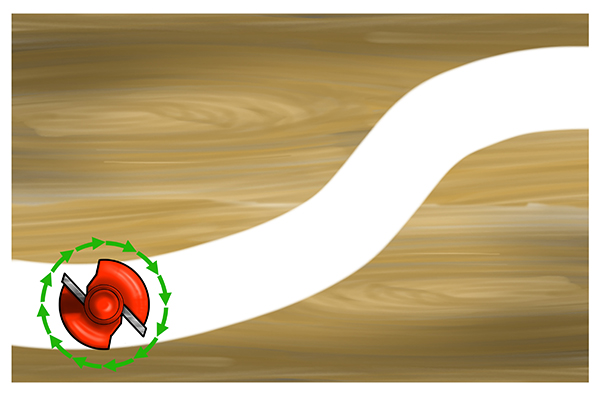 |
When cutting a pattern freehand, you can move in any direction through the middle of the material, as the router bit is cutting two edges anyway.
However, try not to change the feed direction abruptly at any point, smooth movements will produce a much cleaner finish. |
|||
What is the correct feed direction for routing with a router table? |
||||
Routing an outside edge |
||||
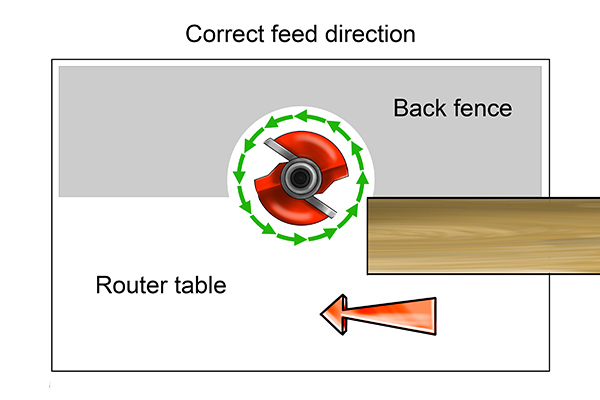 |
When routing an outside edge with a stationary router, you should feed the material from right to left. Routing from left to right may be ok if you’re an experienced user and only making very shallow cuts, but most of the time it will cause the bit to drag the material out of your hands! |
|||
Routing a groove through material |
||||
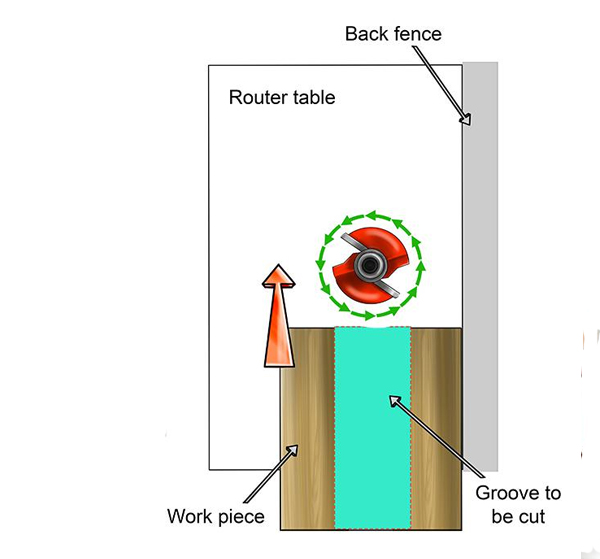 |
When routing a groove through the middle of a workpiece, there is always going to be material on both sides of the router bit, so what is the correct feed direction?
Well, technically there isn't one, as the router is always cutting with and against its own rotation at the same time.
However, if you’re using a guide fence, routing right to left will mean the bit is always pulling the router against the fence, keeping your cut on course. |
|||






